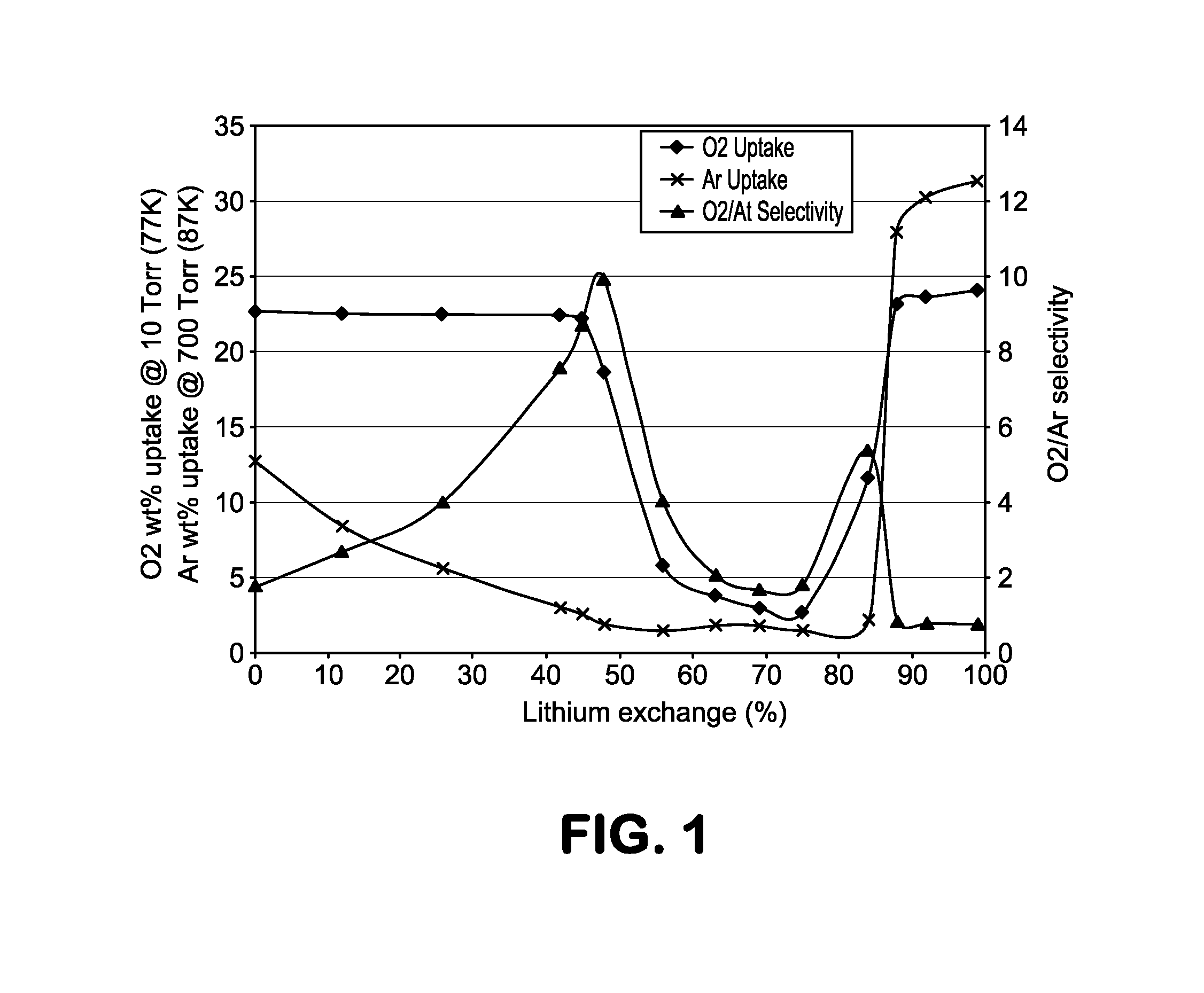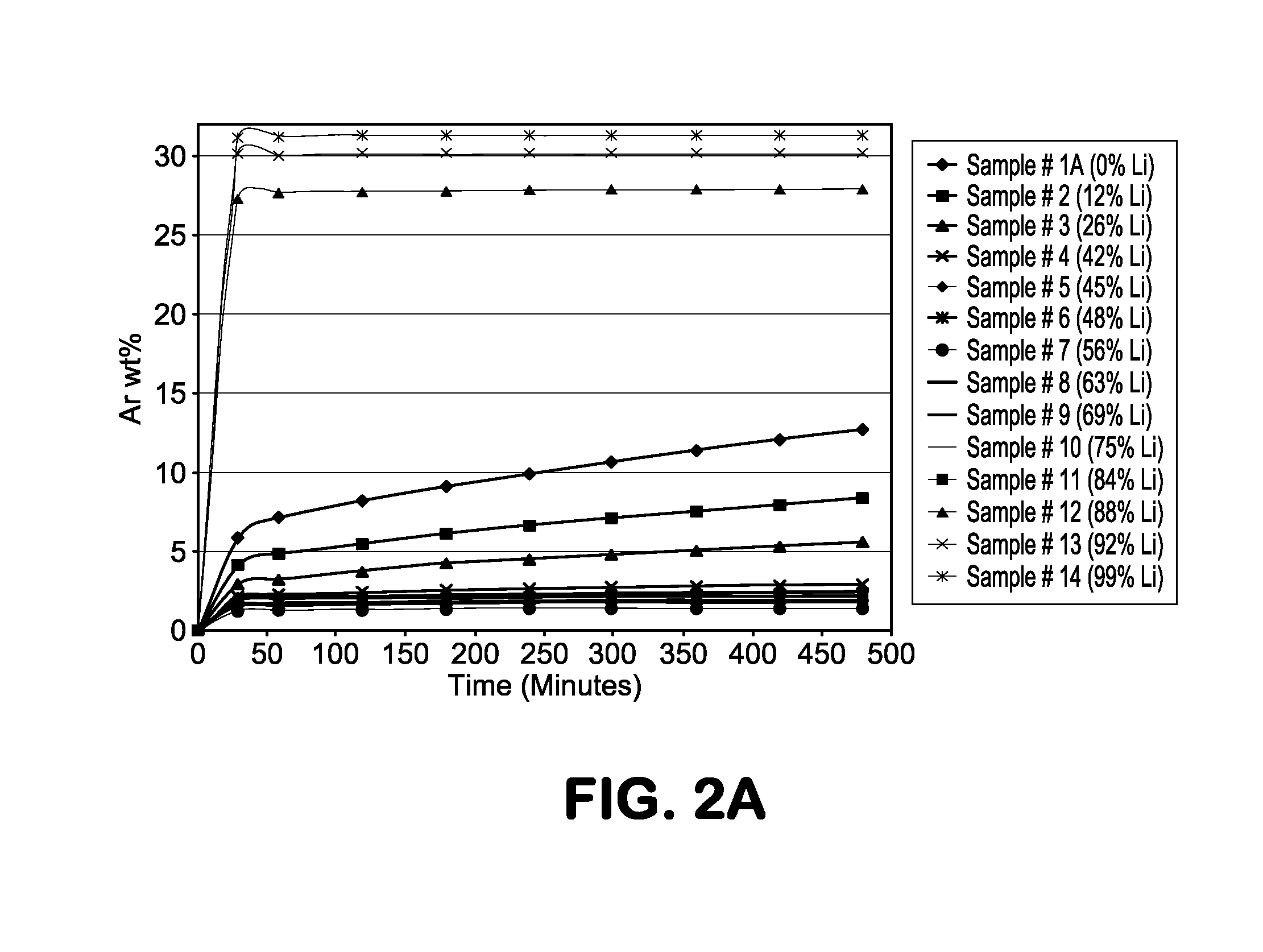Adsorbent composition for argon purification
a technology of argon and composition, applied in the direction of physical/chemical process catalysts, other chemical processes, silicon compounds, etc., can solve the problems of not meeting the economic criteria necessary to meet customer demand at an acceptable price, the presence of oxygen in the argon, and finding the proper process, etc., to achieve the effect of regenerating
- Summary
- Abstract
- Description
- Claims
- Application Information
AI Technical Summary
Benefits of technology
Problems solved by technology
Method used
Image
Examples
Embodiment Construction
[0023]The present invention describes a molecular sieve adsorbent composition having a pore size which is in-between those of commercially available adsorbents 4A zeolite (sodium ion-based with a nominal pore size of approximately 4 Å) and 3A zeolite (potassium ion-based with a nominal pore size of approximately 3 Å). This type of zeolite or molecular sieve is needed for applications where the pore size of commercially available 3A is too small and 4A is too large in that no separation or purification, based on size of the atoms or molecules to be separated, takes place. The use of these commercial adsorbents leads to a low working capacity and selectivity resulting in impractical and uneconomical commercial adsorption processes and systems. Moreover, for a size-based or kinetic separation, it is desirable to be able to modify and even fine tune the pore size and thereby optimize the working capacity and / or selectivity to accommodate different process conditions including; operating...
PUM
| Property | Measurement | Unit |
|---|---|---|
| pressure | aaaaa | aaaaa |
| pressure | aaaaa | aaaaa |
| pressure | aaaaa | aaaaa |
Abstract
Description
Claims
Application Information
 Login to View More
Login to View More - R&D
- Intellectual Property
- Life Sciences
- Materials
- Tech Scout
- Unparalleled Data Quality
- Higher Quality Content
- 60% Fewer Hallucinations
Browse by: Latest US Patents, China's latest patents, Technical Efficacy Thesaurus, Application Domain, Technology Topic, Popular Technical Reports.
© 2025 PatSnap. All rights reserved.Legal|Privacy policy|Modern Slavery Act Transparency Statement|Sitemap|About US| Contact US: help@patsnap.com



